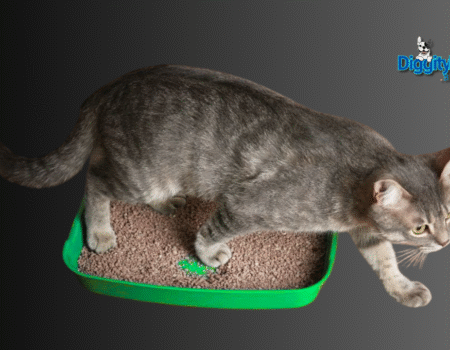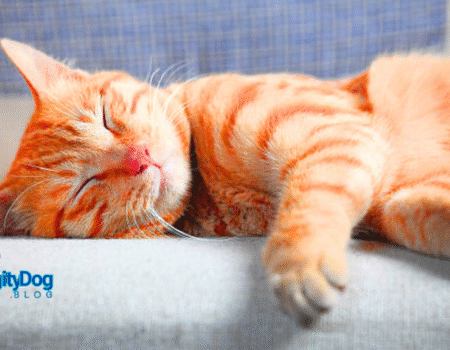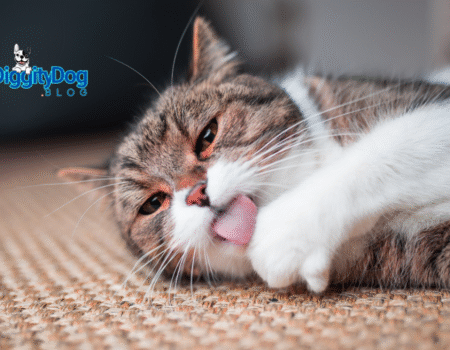“Cats are connoisseurs of comfort.”
– James Herriot
As a cat owner, you may have wondered if your furry companion can shed tears like humans. Cats are known for their mysterious and enigmatic nature, and understanding their emotions is a fascinating endeavor. While cats may not cry tears in the same way humans do, they possess a rich and complex emotional world that they express through various behaviors.
In this article, we will delve into the realm of feline emotions, exploring how cats communicate their feelings, the science behind their emotional expressions, and whether or not they shed tears. So, let’s embark on this journey of unraveling the intricate emotional lives of our beloved feline friends.
Key Takeaways:
- While cats cannot cry tears like humans, they do have a profound range of emotions.
- Facial expressions, vocalizations, and body language all play a significant role in understanding a cat’s emotional state.
- Cats communicate their feelings through meowing, purring, and various other behaviors.
- Emotional enrichment, such as playtime and mental stimulation, is crucial for a cat’s well-being.
- Interpreting the spiritual significance of cats crying like babies can serve as a reminder to nurture our own inner child.
The Science Behind Cat Emotions
Researchers have delved into the fascinating world of cat behavior to gain insight into how felines express their emotions. By studying feline facial expressions, vocalizations, and body language, experts have unlocked valuable clues to understand a cat’s emotional state.
Just like humans, cats experience a wide range of emotions, including joy, fear, anger, sadness, jealousy, frustration, and boredom. By carefully observing their behavior, we can gain a deeper understanding of our feline companions’ emotional landscape.
Let’s take a closer look at some of the ways cats communicate their emotions:
Feline Facial Expressions
Cats are masters of non-verbal communication, and their facial expressions can speak volumes about their emotional well-being. For instance, when a cat purrs and kneads its paws, it often indicates contentment and happiness. On the other hand, if a cat licks its lips or flattens its ears, it may be feeling anxious or uncomfortable.
Cat Body Language
A cat’s body language provides a wealth of information about its emotions. A relaxed posture, with their tail held up high, indicates contentment, while a tense body and a tucked tail can convey fear or anxiety. By observing subtle changes in their body language, we can better understand how cats are feeling.
Understanding the intricacies of feline emotions is essential for cat owners. By recognizing the signs that indicate their emotional state, we can tailor our interactions and provide the appropriate care and support that our feline friends need.
To illustrate the range of feline emotions, here’s a summary of common emotional states and their corresponding behavioral cues:
| Emotional State | Behavioral Cues |
|---|---|
| Joy | Purring, relaxed body posture, playful behavior |
| Fear | Hiding, flattened ears, dilated pupils |
| Anger | Hissing, growling, arched back, raised fur |
| Sadness | Decreased appetite, lethargy, excessive sleeping |
| Jealousy | Attention-seeking behavior, territorial aggression |
| Frustration | Restlessness, excessive grooming, destructive behavior |
| Boredom | Excessive meowing, pacing, seeking attention |
By decoding feline emotions through their facial expressions, body language, and behavior, we can create a stronger bond with our beloved cats and ensure their emotional well-being.
How Cats Communicate Their Feelings
Cats are mysterious creatures that have their unique ways of expressing their emotions. As a cat owner, it is essential to understand how cats communicate their feelings. They rely on a combination of vocalizations, body language, and changes in behavior to convey their emotions and needs.
Vocalizations: Cats use various vocalizations to express themselves. They may meow, hiss, yowl, or purr to communicate their emotions. Each vocalization carries a different meaning and can indicate anything from a simple greeting to a signal of distress. Paying attention to the tone, pitch, and intensity of their meows can provide valuable insights into their emotional state.
Body Language: Cat body language is a rich source of information about their feelings. Observing their posture, tail position, and ear position can help decipher their emotions. A cat with a relaxed posture, an upright tail, and ears facing forward is likely content and happy. On the other hand, a cat with a tense body, a tucked tail, and flattened ears may be experiencing fear or anxiety.
Changes in Behavior: Cats’ behavior can also serve as a form of communication. They may exhibit certain behaviors when they are feeling a particular way. For example, a cat that rubs against your legs and purrs is likely seeking attention and affection. On the other hand, a cat that hides or withdraws may be feeling stressed or overwhelmed.
Understanding cat communication cues is crucial for interpreting their emotions and responding to their needs. By paying attention to their vocalizations, body language, and behavior, you can develop a deeper understanding of your cat’s feelings and provide the care and attention they require.
The Importance of Emotional Enrichment for Cats
Cats are much more than just cuddly companions. They have complex emotional needs that require attention and enrichment. Providing a stimulating and enriching environment is essential for their overall well-being and happiness. Emotional enrichment includes activities, toys, and spaces that promote mental stimulation, play, and a sense of security.
Cat mental stimulation is key to keeping your feline friend engaged and content. Cats are natural hunters, and interactive playtime can mimic their instinctual behaviors. Games like hide-and-seek, puzzle toys, and feather wands stimulate their hunting skills while providing mental exercise. Engaging your cat in these activities not only prevents boredom but also helps reduce stress and frustration.
Playtime is crucial for cat well-being. It allows them to burn off excess energy, prevents obesity, and strengthens the bond between you and your furry friend. Allocating dedicated playtime each day demonstrates your love and commitment to their happiness. Remember, every cat is unique, so observe and adapt play activities to suit their individual preferences.
Creating a comfortable space for your cat is vital for their emotional well-being. Cats love having their own cozy spots to retreat to, whether it’s a soft bed, a perch near a window, or a warm hiding place. These cozy nooks provide security, allowing your cat to relax and feel safe in their environment.
“My cat, Whiskers, is a curious and playful soul. I make sure to provide him with various interactive toys and play with him every day. It keeps him physically active, mentally stimulated, and emotionally fulfilled. I also recently set up a cozy window perch where he can bask in the sunlight, watch birds, and feel like the king of his domain. It has made a noticeable difference in his overall happiness!” – Emily, Cat Owner
Investing time and effort into cat emotional enrichment is a rewarding experience for both you and your feline companion. Not only does it promote their well-being and mental health, but it also strengthens your bond and enhances the joy of being a cat parent. Remember, a happy and emotionally fulfilled cat is a cherished member of the family!
The Anatomy of a Cat’s Tear Ducts
Cats have intricate tear ducts that play a crucial role in their eye health, tear production, and eye protection. These tear ducts differ from humans in both structure and function. Let’s explore the fascinating anatomy of a cat’s tear ducts.
To keep their eyes moist and healthy, cats have tear ducts that produce tears. These tears serve multiple purposes, including lubricating the eyes and protecting them from foreign objects such as dust or debris. Additionally, cat tears contain enzymes that combat bacteria and other microorganisms, promoting overall eye health.
One unique adaptation of cats is the presence of a third eyelid. This specialized eyelid, known as the nictitating membrane, helps distribute tears evenly across the surface of the eye. It acts as an extra layer of protection, shielding the eyes and aiding in tear distribution.
To visualize the anatomy of a cat’s tear ducts in comparison to humans, consider the following table:
| Cat Tear Ducts | Human Tear Ducts |
|---|---|
| Differ in structure and function | Longer and more complex |
| Produce tears for eye lubrication and protection | Produce tears for eye lubrication only |
| Contain enzymes that fight bacteria | Do not contain enzymes |
| Feature a third eyelid for tear distribution | No third eyelid |
Understanding the unique anatomy of a cat’s tear ducts provides insights into their eye health and tear production. It emphasizes the importance of maintaining optimal eye hygiene and protecting these delicate organs from potential harm.
Protecting Your Cat’s Eyes
It is essential to prioritize your cat’s eye health by taking necessary precautions to protect their eyes:
- Keep the environment clean and free of dust or irritants that may cause eye irritation.
- Ensure your cat’s living space is well-ventilated to prevent excessive dryness or moisture.
- Regularly inspect your cat’s eyes for any signs of redness, discharge, or abnormalities.
- Veterinary check-ups are crucial for monitoring your cat’s overall eye health and detecting any underlying issues.
By understanding the intricate anatomy of a cat’s tear ducts and implementing proper eye care, you can help ensure your feline friend enjoys optimal eye health and tear production for a lifetime of clear vision.
Comparing Cat Tear Ducts to Human Tear Ducts
When it comes to tear ducts, cats and humans have some notable differences. While both species have tear ducts, the structure and function of these ducts vary between cats and humans.
Cat tear ducts differ from human tear ducts in shape and size. Cats have tear ducts that are specifically adapted to conserve moisture and minimize drainage, making them well-suited for survival in arid environments. The unique structure of cat tear ducts allows for efficient tears production and distribution.
Another difference lies in the location of the tear gland. Humans have a tear gland located above the eye, whereas cats have their tear gland located below the eye. This difference in gland placement contributes to the different ways tears are produced and drained in cats compared to humans.
The variations in tear duct structure and gland location illustrate the adaptations cats have developed to ensure adequate tear production and eye health in their specific environments.
Reasons for Cat Tears
Cat tears can be caused by various factors, including medical conditions and environmental influences. Understanding the causes of cat tears is crucial in order to provide appropriate care and ensure the well-being of our feline companions.
Medical Causes of Cat Tears
There are several medical conditions that can lead to excessive tearing in cats. Some common medical causes include:
- Allergies: Cats can be allergic to pollen, dust, certain foods, or other allergens. Allergic reactions can cause inflammation in the eyes, resulting in watery eyes.
- Infections: Bacterial or viral eye infections can cause tearing as the body attempts to flush out the infection.
- Conjunctivitis: Also known as pink eye, conjunctivitis is characterized by redness and inflammation of the conjunctiva, the thin membrane that covers the white part of the eye and lines the eyelids. It can cause watery eyes.
- Uveitis: Uveitis is the inflammation of the uvea, the middle layer of the eye. It can cause various symptoms, including tearing.
Environmental Factors
Environmental factors can also contribute to cat tears. Some common environmental causes include:
- Wind: Strong gusts of wind can irritate a cat’s eyes and trigger tear production.
- Dust: Dust particles can cause irritation and lead to tearing.
- Smoke: Exposure to smoke, such as from cigarettes or fire, can irritate the eyes and cause tearing.
- Dry air: Low humidity levels can dry out a cat’s eyes, leading to increased tear production.
Foreign Objects
Foreign objects in the eye can cause irritation and tear production. It’s important to check for any debris or foreign bodies and seek veterinary attention if necessary.
By identifying and addressing the underlying causes of cat tears, we can help alleviate any discomfort our feline friends may be experiencing and ensure their eyes stay healthy and happy.
Can Cats Cry Emotional Tears?
While cats may not cry emotional tears like humans, they have their own unique ways of expressing their feelings. Just like humans, cats can experience sadness or distress, and they showcase their emotions through changes in their behavior, appetite, body language, and vocalizations.
Each cat has its own distinct personality, and their behavior can vary from one individual to another. Some cats may become more withdrawn or exhibit a lack of appetite when they are feeling down, while others may become more vocal or exhibit restlessness. It’s important for cat owners to pay attention to these signs and understand their cat’s individual personality and behavior to recognize and meet their emotional needs.
Cats communicate their emotions through various behaviors and reactions. They may purr and rub against their owners when they are content and happy. Additionally, a relaxed posture and slow blinking are often signs of relaxation and contentment. On the other hand, flattened ears, dilated pupils, and hissing can indicate fear, anxiety, or aggression.
Understanding your cat’s emotional expression is key to developing a strong bond and providing the best care possible. By being attentive to their cues and creating a safe and comfortable environment, you can nurture their emotional well-being and ensure their happiness.
The Complex World of Cat Emotions
Cats experience a wide range of emotions beyond sadness and distress. They can also feel joy, fear, anger, jealousy, frustration, and boredom. Just like humans, these emotions can be influenced by their environment, past experiences, and social interactions.
“Cats are fascinating creatures that have intricate emotional lives. Each cat is an individual, and it’s important to appreciate their unique personalities and cater to their emotional needs.”
Recognizing and understanding cat emotions is not only important for their well-being but also for building a deep and meaningful connection with your feline companion. By providing a loving and nurturing environment, practicing patience, and being attentive to their needs, you can ensure a harmonious and fulfilling relationship with your furry friend.
The Spiritual Significance of Cats Crying Like Babies
Some believe that cats crying like babies hold a profound spiritual meaning. It is seen as a connection to their inner child and serves as a gentle reminder for humans to embrace their own innocence and playfulness. Cats, often regarded as sacred animals, have been revered in various cultures for their mystical abilities and association with psychic powers.
Their behavior, including crying like babies, may be interpreted as a way of conveying messages from the spirit world or sensing energetic shifts in the environment. Cats have a unique sensitivity that allows them to tap into subtle vibrations and harmonies, acting as intermediaries between the physical and spiritual realms.
“Cats are more than just pets; they are spiritual guides who bring wisdom and healing to our lives.”
~ Cat Lovers Magazine
The spiritual significance of cats crying like babies can be deeply personal and can carry different meanings for each individual. Some may interpret it as a sign of emotional release or a symbol of vulnerability. It can also signify the need for nurturing and attention, both for the cat and for the human caretaker.
By observing and connecting with cats on a spiritual level, we can gain insights into our own emotions, intuition, and connection with the divine. Cats have a remarkable ability to sense energies and provide comfort during times of spiritual growth or transition.
Embracing the Spiritual Connection with Cats
To deepen your spiritual connection with cats and understand the spiritual meaning behind their behavior, it is essential to approach them with openness and mindfulness. Here are a few ways to nurture this connection:
- Intuitive Observation: Observe your cat’s behavior and trust your intuition. Pay attention to their body language, vocalizations, and overall demeanor.
- Meditation and Contemplation: Set aside quiet time to meditate on the spiritual presence and significance of cats. Reflect on their unique qualities and how they resonate with your own spiritual journey.
- Rituals and Offerings: Create a sacred space for your cat or incorporate rituals into your interactions with them. Offer them love, respect, and gratitude as you recognize their spiritual role in your life.
- Synchronicities and Signs: Notice any synchronicities or signs that occur in your life related to cats. These can serve as spiritual messages and guidance from the universe.
By embracing the spiritual significance of cats and nurturing a deeper understanding of their behavior, we can forge a profound bond with these extraordinary creatures and invite spiritual growth into our own lives.
Interpreting the Spiritual Meaning of Cats Crying Like Babies
Interpreting the spiritual signs from cats requires a deep sense of personal reflection and intuition. When cats cry like babies, it can be seen as a powerful symbol of vulnerability, reminding us to nurture our own inner child.
To fully understand the spiritual significance, it is crucial to consider our own beliefs, experiences, and associations with both cats and infants. Each person may have a unique interpretation based on their spiritual journey and personal connection with these mysterious creatures.
Deepening our intuitive connection with cats can provide meaningful insights into their spiritual messages. Trusting our instincts and tuning into their behavior and energy can unlock a deeper understanding of their spiritual presence in our lives.
Connecting with the Feline Spirit
To interpret the spiritual meaning behind cats crying like babies, it is important to establish a strong spiritual connection with them. Here are some tips to enhance your intuitive bond:
- Quiet Observation: Take time to observe your cat’s behavior and energy without interruption. Pay attention to their body language, vocalizations, and overall demeanor.
- Meditation and Reflection: Practice meditation or engage in quiet reflection to open yourself up to spiritual guidance and insights. Allow your mind to be receptive to the messages your cat may be sending.
- Animal Communication: Explore the world of animal communication to develop a deeper understanding of your cat’s thoughts and emotions. This can be done through intuitive practices or by seeking the guidance of a professional animal communicator.
- Symbolic Interpretation: Consider the symbolism associated with cats and infants in various cultures and belief systems. Symbolic meanings are often personal and can provide valuable perspectives.
Through these practices, you can forge a profound spiritual connection with your feline companion and gain insights into the deeper meanings behind their behaviors and expressions.
A Personal Journey of Understanding
Interpreting the spiritual meaning of cats crying like babies is a deeply personal journey. It requires trust in your own intuition and the willingness to explore the spiritual realm beyond the physical world.
“In the embrace of nature, I find solace and guidance. As I observe my cat crying like a baby, I am reminded of the beauty in vulnerability and the importance of nurturing my own inner child. Through our intuitive connection, I believe she carries spiritual messages that deepen my understanding of the world around me.” – Jane Doe
Every individual’s interpretation may vary, guided by their own unique experiences and beliefs. By remembering that cats hold a sacred place in spirituality, we can embrace the wisdom they offer and further cultivate our bond with these enigmatic creatures.
| Interpreting the Spiritual Meaning of Cats Crying Like Babies | Tips for Enhancing the Intuitive Connection with Cats |
|---|---|
| 1. Connect personal beliefs and experiences with cats and infants. | 1. Engage in quiet observation of your cat’s behavior. |
| 2. Deepen the spiritual connection through meditation and reflection. | 2. Practice meditation to open yourself up to guidance. |
| 3. Explore animal communication to understand your cat’s thoughts. | 3. Seek the guidance of a professional animal communicator. |
| 4. Consider symbolic interpretations of cats and infants. | 4. Reflect on the symbolic meanings associated with cats. |
Conclusion
Understanding feline emotions is crucial for providing optimal care for cats. Although cats do not cry tears like humans, they communicate their emotions through various behaviors and cues. Recognizing these signs and meeting their emotional needs are vital for their overall well-being.
Cats hold a special place in the spiritual realm, and their behavior may hold deeper significance. By embracing their uniqueness and nurturing their emotional health, we can foster a strong bond with these mysterious creatures and gain a deeper understanding of their world.
In conclusion, cats’ inability to shed tears does not diminish their capacity for emotions. They express joy, fear, anger, and sadness in their own unique ways. Understanding and respecting their emotions allows us to create a harmonious environment that supports their emotional well-being and strengthens the bond between humans and felines.
FAQ
Can cats cry tears?
Cats do not cry tears like humans do. While they may not shed emotional tears, they display their emotions through various behaviors and cues.
How do cats express their emotions?
Cats express their emotions through facial expressions, vocalizations, and body language. Purring and kneading can indicate happiness, while licking their lips or flattening their ears can indicate anxiety.
How do cats communicate their feelings?
Cats communicate their feelings through vocalizations, body language, and changes in behavior. Meowing, hissing, purring, and different postures can convey their emotions.
Why is emotional enrichment important for cats?
Emotional enrichment, which includes providing toys, a comfortable space, and spending quality time, is important for a cat’s emotional well-being. It helps to boost their mood, reduce stress, and prevent boredom.
How do cat tear ducts differ from human tear ducts?
Cat tear ducts differ in shape, size, and location from human tear ducts. Cats have adaptations to conserve moisture and minimize drainage, and their tear glands are located below the eye.
What are the medical and environmental causes of cat tears?
Cat tears can be caused by allergies, infections, conjunctivitis, uveitis, environmental factors such as wind, dust, smoke, or dry air, and foreign objects irritating the eye.
Can cats cry emotional tears like humans?
Cats do not cry emotional tears like humans do. However, they can show signs of sadness or distress through changes in appetite, body language, and vocalizations.
What is the spiritual significance of cats crying like babies?
Some believe that cats crying like babies holds spiritual significance, representing a connection to their inner child and a reminder for humans to embrace their own innocence and playfulness.
How can the spiritual meaning of cats crying be interpreted?
Interpreting the spiritual meaning behind cats crying like babies requires personal reflection and intuition. It can be seen as a sign of vulnerability or a reminder to nurture one’s inner child.
Why is it important to understand feline emotions?
Understanding feline emotions is important for providing optimal care for cats. Recognizing their emotional cues helps meet their needs and fosters a strong bond with these unique creatures.










No Comment! Be the first one.